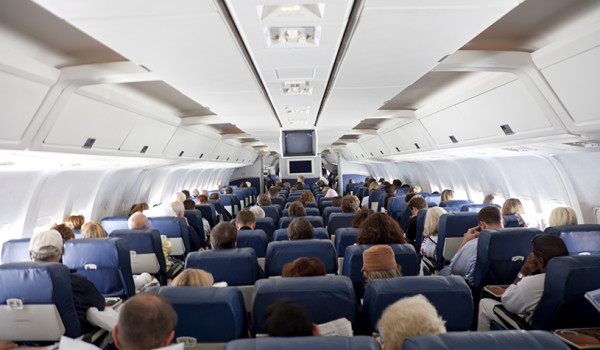In Flight Emergencies and Good Samaritan Acts
27 Nov 2014

Case history
One hour into a 13-hour international flight, a 39-year-old passenger developed acute breathlessness and left-sided chest pain.1 Professor Wallace, an Orthopaedic Surgeon, responded to the call: If there is a doctor on board could you make yourself known to the cabin staff?
The passenger gave a history of having fallen off a motorcycle on her way to the airport. Following a brief physical examination, a diagnosis of a tension pneumothorax was made. Professor Wallace asked if medical advice could be obtained from the ground. It was not possible to receive immediate advice, so he decided to proceed with the insertion of a chest drain.
The aircraft’s medical kit contained a scalpel, scissors, and a 14-gauge urinary catheter. There was lignocaine for use as a local anaesthetic. The following equipment was prepared: heated hand towels for sterile drapes; a modified coat hanger as a trocar for the urinary catheter; a bottle of mineral water with two holes created in its cap for use as an underwater seal drain; and a length of oxygen tubing to attach the catheter to the drain. Cellotape was used to anchor the catheter to the oxygen tubing and brandy was used as a disinfectant for the introducer.
Professor Wallace advised the passenger that she had a serious condition and an operation was required. He then proceeded to insert the chest drain into the left second intercostal space. As soon as the drain was connected, air was released from the pleural cavity and within five minutes the passenger had almost fully recovered.
Medico-legal issues
If a call for emergency assistance is made, an issue of concern may be the possibility of being sued in the event of an adverse outcome. The potential liability of a doctor who responds to an in-flight emergency is complex.
While there is legislative protection for Good Samaritans in Australia , the law relating to Good Samaritan acts varies from country to country. The determination of jurisdiction of any action on an international flight may range from the country in which the aircraft is registered through to the country of citizenship of the passenger or doctor.
In any event, many major airlines have insurance policies to indemnify doctors who come forward to assist in an emergency. If required, doctors should seek written confirmation of indemnity from the aircraft captain.
Also, the US Aviation Medical Assistance Act 1998 protects doctors who provide assistance on aircrafts registered in the US.
In addition to these protections, MDA National’s Professional Indemnity Insurance Policy provides cover for any claims arising out of Good Samaritan acts regardless of the jurisdiction in which the claim is brought, including claims arising out of the US.
Discussion
It has been estimated that 44,000 in-flight medical emergencies occur worldwide each year (one emergency per 604 flights).2 On-board assistance was provided by doctors in 48% of medical emergencies. Aircraft diversion occurred in 7% of cases and the death rate was 0.3%.
A recent study of 11,920 in-flight emergencies revealed that the most common problems were:
- syncope or presyncope (37%)
- respiratory symptoms (12%)
- nausea or vomiting (10%)
- cardiac symptoms (8%)
- seizures (6%)
- abdominal pain (4%).2
Summary points
- The risk of a claim arising out of the provision of medical care during an in-flight emergency appears to be very low.
- When providing aid to a passenger during an in-flight emergency, Members are protected from liability by a combination of legislation, indemnity by the airline and their MDA National Insurance policy.
Dr Sara Bird
Manager, Medico-legal and Advisory Services
MDA National
1. Wallace WA. Managing In Flight Emergencies: A Personal Account. BMJ 1995; 311:374-376.
2. Peterson DC, Martin-Gill C, Guyette FX et al. Outcomes of Medical Emergencies on Commercial Airline Flights. N Engl J Med 2013; 368:2075-83.
Professional boundaries in healthcare - Part 1
Boundaries with patients present in numerous ways every day and all health practitioners
11 Aug 2025
Understanding Professional Medical Indemnity Insurance
Do you understand the ins and outs of professional medical indemnity insurance?
11 Aug 2025
Professional boundaries in healthcare - Part 2
Boundaries with patients present in numerous ways every day and all health practitioners
11 Aug 2025
Understanding changes to the Fair Work Act
What are the changes to the Fair Work Act and what is my role?
22 Jul 2025






